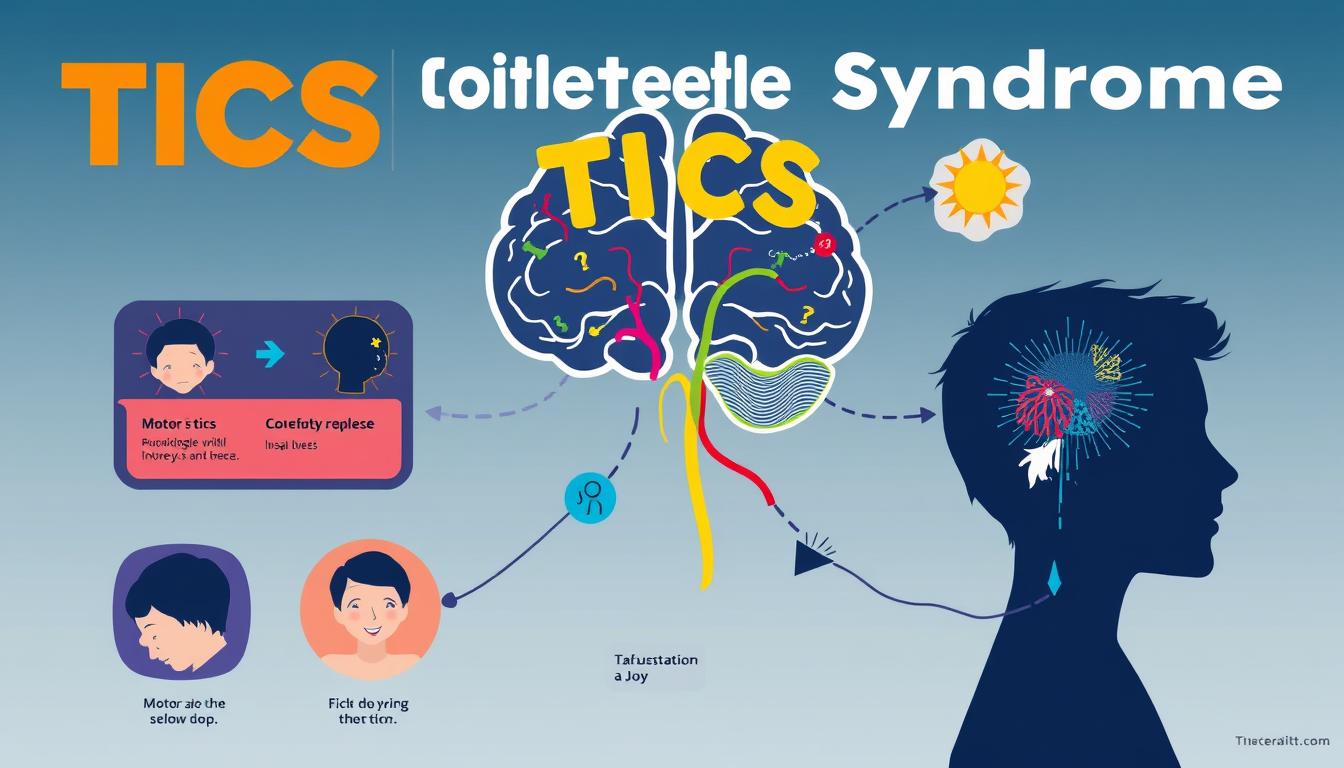The loss of a loved one can be a devastating experience, and when it happens to a child, the pain can be even more profound. As a parent or caregiver, witnessing your child’s grief can be heartbreaking, but it’s essential to understand that their journey through loss may look different from your own. Children grieve in unique ways, shaped by their age, developmental stage, and personal experiences.
In this comprehensive guide, we’ll explore the nuances of children’s grief responses, offer practical strategies to support them, and provide resources to help navigate this challenging yet transformative process. Remember, you’re not alone – with the right tools and support, you can guide your child through this difficult time with empathy, patience, and love.
Key Takeaways
- Children’s grief manifests differently than adults’ due to their developmental stage and emotional capacity.
- Maintaining open communication, validating their feelings, and providing a safe space for expression are crucial.
- Seeking professional support, such as child therapists, can offer specialized techniques and guidance for parents and caregivers.
- Engaging in memory-making activities and fostering healthy coping strategies can facilitate the healing process.
- Understanding the grieving process and recognizing milestones in recovery can help parents and caregivers support their children effectively.
Understanding Children’s Grief Responses
When a loved one passes away, children grieve differently than adults. Their understanding of death’s permanence varies based on age, and they may grapple with complex emotions like guilt or anxiety. As a parent or caregiver, it’s crucial to recognize the common signs of grief in children and how they may express their emotions at different developmental stages.
Common Signs of Grief in Children
Children experiencing grief may exhibit a range of behaviors, including school avoidance, emotional reactions, shock, confusion, denial, and sadness. They may also display physical complaints like headaches or regress to younger behaviors. These reactions are often a child’s way of coping with the overwhelming feelings that come with loss.
Age-Appropriate Reactions
The way children grieve can vary significantly based on their age. Younger children, aged 2-4 years, may experience behaviors such as poor academic performance, night-time disturbances, and regressive behaviors. Children between 5-8 years old often express their big emotions through behaviors, exhibit anxiety, and may have nightmares and intrusive thoughts. Teenagers, typically aged 8-12 years, may withdraw from family and engage in risky behaviors when coping with grief.
Emotional vs. Behavioral Responses
Grief can manifest both emotionally and behaviorally in children. Emotional responses may include sadness, rage, guilt, relief, and worry, while behavioral changes can range from fear of sleep, repetitive questions, and difficulties in concentration to physical complaints like headaches and stomach aches. It’s important to recognize that these reactions are all part of the grieving process and to provide your child with the support they need.
“Grief is not something to be fixed or overcome, but rather a natural and necessary response to loss. As parents and caregivers, our role is to provide a safe space for children to express their emotions and guide them through this challenging time.”
The Importance of Open Communication
As you navigate the challenging journey of supporting a grieving child, open and empathetic communication is crucial. Encouraging honest conversations can help your child express their emotions, find comfort, and develop essential emotional intelligence skills.
Encouraging Honest Conversations
Be direct in your language and avoid using euphemisms, which can confuse or mislead your child. Start with minimal information and gradually add more details based on their questions and readiness. Importantly, don’t hide your own sadness – allowing your child to see your empathetic communication can help them feel understood and validated.
Using Age-Appropriate Language
When discussing the loss, use age-appropriate language that your child can comprehend. Keep explanations simple and direct, and be prepared to answer questions about how or why the death occurred, though avoid overwhelming them with unnecessary details.
Listening Actively to Your Child
Active listening is a powerful tool in parental guidance during this time. Allow your child to express their concerns and perspectives, which may differ from your own. By listening attentively, you can better understand their unique grieving process and provide the support they need.
“The most important thing is to listen. Listening is more important than worrying about what to say.” – Megan Devine, therapist and author
Remember, open and honest communication, combined with a compassionate approach, can help your child navigate the complexities of grief and strengthen the bond between you.
Creating a Safe Space for Emotions
When navigating the journey of loss with your child, it’s crucial to create a safe and nurturing environment where they feel empowered to express their emotions. Establishing a consistent routine can provide a sense of security and familiarity during this turbulent time. Encourage your child to open up through thoughtful conversations, validating their feelings, and allowing them to participate in family rituals and goodbyes.
Providing Comfort Through Physical Touch
Physical touch can be a powerful source of comfort for children coping with grief. Offer hugs, cuddles, and other gentle forms of affection to help your child feel supported and understood. These small gestures can go a long way in soothing their emotional distress and fostering a sense of safety.
Encouraging Creative Expression
- Provide art supplies, such as paints, colored pencils, or clay, to allow your child to express their emotions through creative outlets.
- Encourage journaling or storytelling as a means for them to process their thoughts and feelings about the loss.
- Consider introducing music, dance, or other forms of artistic expression that can serve as a therapeutic outlet.
By creating a nurturing environment and offering opportunities for emotional expression, you can help your child build resilience, develop coping mechanisms, and strengthen their emotional intelligence during this challenging time.
“Grief is not a disorder, a disease, or a sign of weakness. It is an essential part of healing.” – Reverend Earl A. Grollman
Validating Their Feelings
When a child experiences the loss of a loved one, it’s crucial to validate their emotional responses. Empathetic communication and emotional intelligence can play a vital role in supporting a grieving child through this challenging time. As a parent or caregiver, it’s essential to acknowledge the pain and sadness they’re feeling.
Acknowledging Pain and Sadness
Avoid minimizing statements that downplay the child’s emotions. Let them know it’s okay to express all their feelings, including anger or moments of happiness. Reassure them that their emotions are normal and that grieving takes time. Be patient as their needs and emotions fluctuate, and allow them to grieve at their own pace.
Building Empathy Through Shared Experiences
If appropriate, consider sharing your own experiences with grief. This can help build empathy and understanding, letting the child know they’re not alone. Sharing your own journey with loss can provide a sense of comfort and reassurance, showing them that it’s possible to navigate the grieving process.
| Empathetic Communication Strategies | Benefits for Grieving Children |
|---|---|
|
|
By validating a child’s feelings and providing a safe, empathetic environment, parents and caregivers can help guide them through the grieving process with emotional intelligence and care.

How Parents Can Manage Their Own Grief
When a child dies, the grief experienced by parents can be profound and overwhelming. It’s important to understand that parental grief can significantly impact children, both emotionally and behaviorally. While it’s okay to show sadness and let your child see your grief, avoid overwhelming displays of emotion that may alarm or distress them.
The Impact of Parental Grief on Children
Grieving parents may struggle with making quality decisions, being emotionally available for their children, and maintaining a physical presence in their lives. Grief can hinder a parent’s ability to keep up with children in the moment, disrupt family routines, and impact a parent’s social engagement or communication with their children.
Seeking Support for Yourself
As you navigate your own grief, it’s crucial to seek support for yourself. Reach out to friends, family members, or seek professional counseling. Sharing your feelings of guilt, regret, and other complex emotions with understanding individuals can aid in your grief processing.
Modeling Healthy Coping Strategies
It’s important to model healthy coping strategies for your children during this difficult time. Externalizing your grief through activities like journaling, meditation, or physical exercise can help you manage your emotions while also demonstrating healthy ways for your child to process their own grief.
Remember, your grief process may differ from your child’s, and they may go in and out of grief while you experience it more continuously. Take care of your own emotional needs to better support your grieving child.
“Grief is a journey, not a destination. It’s important to give yourself and your child the time and space to heal, while also seeking support along the way.”
Offering Practical Support
When a child is grieving, the practical aspects of daily life can become overwhelming. As a parent or caregiver, you can provide vital support by helping maintain routines and assisting with everyday tasks. This sense of normalcy can offer comfort and stability during a time of profound loss.
Helping with Daily Routines
Offer to help with homework, prepare meals, or handle other regular activities. These small gestures can alleviate the burden and allow the child to focus on the emotional process of grieving. Maintaining a predictable schedule can also help kids feel secure and grounded.
Maintaining Social Connections
Encourage the child to stay connected with friends and family. Social interaction, whether in-person or virtual, can provide much-needed emotional support and a sense of belonging. Facilitate playdates, video calls, or other activities that help the child stay engaged with their support network.
Finding Professional Help if Needed
Monitor the child’s grief response closely. If you notice persistent difficulties in functioning, extreme behavioral changes, or signs of complicated grief, consider seeking professional help. Grief counseling or therapy can provide specialized support and coping strategies during this difficult time.
Remember, your presence and practical assistance can make a significant difference in a child’s ability to navigate the grieving process. By offering this multifaceted support, you can help foster resilience and promote healing.

Activities to Facilitate Healing
Grieving the loss of a loved one can be a profoundly challenging experience for children. However, engaging in meaningful activities can help them navigate their emotions and promote resilience during this difficult time. From memory-making projects to outdoor adventures and mindfulness practices, these activities can serve as coping mechanisms and facilitate the healing process.
Engaging in Memory-Making Projects
Creating scrapbooks, memory boxes, or collages can be a powerful way for children to honor the memory of their loved one. Encourage them to include special photos, mementos, and personal messages, allowing them to express their feelings and maintain a connection with the deceased. This tactile process can help children process their grief and build emotional intelligence.
Outdoor Activities and Nature Walks
Spending time in nature has been shown to have a calming effect and can be particularly beneficial for children dealing with grief. Consider taking your child on nature walks, where they can observe the beauty and cycles of the natural world. Activities like planting a tree or creating a garden in memory of their loved one can also provide a sense of resilience and connection.
Exploring Mindfulness and Relaxation Techniques
Incorporating mindfulness and relaxation practices into your child’s daily routine can help them manage stress and cultivate emotional resilience. Teach them simple breathing exercises, guided imagery, or even yoga to help them stay grounded and centered. These techniques can provide a healthy outlet for their feelings and promote self-regulation.
By engaging in these activities, you can help your child navigate their grief, build coping mechanisms, and foster resilience during this challenging time. Remember, the grieving process is unique for each child, so be patient and adaptable as you support their journey.
Understanding the Grieving Process Over Time
Navigating the grief journey after a significant loss can be a complex and deeply personal experience. It’s important to recognize that the grieving process is not linear, and grief can resurface at various milestones along the way. By understanding the common stages of grief and the unique ways they may manifest, parents and caregivers can better support children through this transformative process.
Recognizing Milestones in Grief Recovery
In her groundbreaking work, “On Death and Dying,” Elisabeth Kübler-Ross identified the five stages of grief: denial, anger, bargaining, depression, and acceptance. These stages can vary in duration and may not always occur in a specific order, as individuals navigate their unique grieving process.
- Denial can serve as an initial defense mechanism, cushioning the immediate shock of the loss.
- Anger is a necessary part of the healing process, even if it may come as a surprise.
- Bargaining involves internal negotiations, often accompanied by feelings of guilt.
- Depression is a natural response to grief, characterized by intense sadness and fatigue.
- Acceptance is about acknowledging and readjusting to life after the loss, rather than being “okay” with it.
Tackling Anniversaries and Special Dates
Significant dates, such as birthdays, holidays, and the anniversary of the loss, can be particularly challenging for children experiencing loss and bereavement. Parents and caregivers can help by planning ahead and creating new traditions to honor the deceased, providing a sense of comfort and familiarity during these difficult times.
Fostering Resilience in the Long Run
Grief recovery is an ongoing process that may continue for years. By consistently offering support, encouraging open communication, and helping children develop healthy coping mechanisms, parents and caregivers can foster resilience and empower children to navigate the ups and downs of the grieving journey.
“Grief is not a disorder, a disease, or a sign of weakness. It is an emotional, physical, and spiritual necessity, the price you pay for love. The only cure for grief is to grieve.” – Earl Grollman
Remember, there is no set timeline for grief recovery, and each child’s experience may be unique. Seek professional resources, such as support groups or grief counseling, if the grieving process becomes overwhelming or interferes with daily life.
Seeking Professional Resources
Navigating grief can be a challenging journey, especially for children. While family and community support are invaluable, there may come a time when professional intervention is warranted. Consider seeking therapy if your child exhibits persistent signs of complicated grief or struggles to cope with their emotions in a healthy manner.
When to Consider Therapy
Look for signs that your child may benefit from grief counseling, such as ongoing difficulty expressing their feelings, behavioral changes, academic struggles, or an inability to move forward in the grieving process. Professional support can provide specialized tools and strategies to help your child work through their grief in a constructive way.
Types of Support Services Available
Grief support services come in many forms, including individual counseling, family therapy, and specialized support groups for children. Organizations like The Dougy Center and Camp Erin offer age-appropriate programs and resources to help kids process their emotions and connect with peers facing similar experiences. Exploring these options can provide your child with a safe, nurturing environment to navigate their grief.
Books and Tools to Aid Grief Processing
In addition to professional support, various books and resources are available to help children work through their grief. For younger kids, consider titles like “The Grief Rock” by Julia Cook, while older children may benefit from books like “Healing Your Grieving Heart for Teens” by Alan Wolfelt. Online forums and support groups can also offer valuable guidance and a sense of community during this challenging time.



